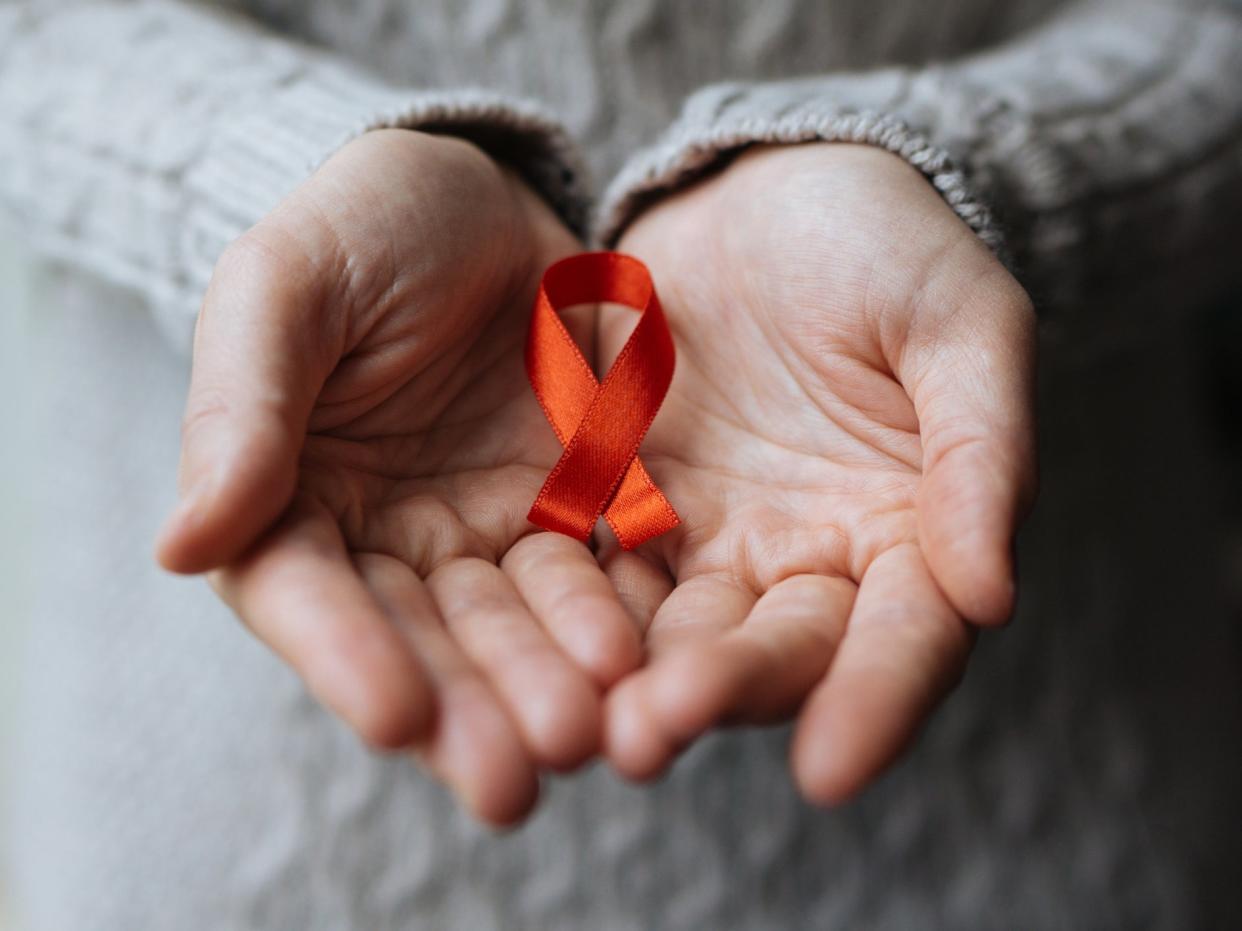A timeline of the AIDS crisis in the UK

When the Aids (acquired immune deficiency syndrome) epidemic ripped through LGBTQ+ communities in the UK, it left an indelible mark on the lives of hundreds of thousands who suffered from the immunodeficiency virus.
According to the National Aids Trust, there were an estimated 105,200 people living with HIV in the UK in 2019.
It’s A Sin, a new television series by Russell T Davies which premieres on Channel 4 on Friday night, follows the lives of five 18-year-olds who move to London in 1981, only to have them completely upended by the Aids crisis.
The series is based on Mr Davies’ and his friends’ experiences of the epidemic in the UK, and was created to commemorate the generation who lost their lives to it.
Here is a timeline of the Aids crisis in the UK, from the first cases to its current status.
1981
Aids was first clinically reported on 5 June, 1981, in the US, where five people showed symptoms of a rare infection known to occur in people with very compromised immune systems.
Soon after, eight cases of a rare skin cancer were reported in medical journal The Lancet in New York. At the same time, an unusual outbreak of killer pneumonia among California’s gay community emerged, and these were soon found to be symptoms of, or caused by, Aids.
On 12 December, a 49-year-old gay man died in Brompton Hospital due to an Aids-related illness, becoming the first death from the disease in the UK. He was a frequent visitor to the US.
1982
Terrence Higgins became one of the first people known to die of an Aids-related illness in the UK. His partner, Rupert Whitaker, and close friends Martyn Butler and Tony Calvert formed the Terry Higgins Trust (later renamed the Terrence Higgins Trust) in his memory. The trust is dedicated to spreading awareness of Aids and providing support for people with the disease.
1987
At this point, Aids is a worldwide epidemic with cases on every continent. The first antiretroviral drug was approved by the FDA and the first needle exchange in the UK was opened in Dundee.
The UK government launched a major public information campaign titled ‘Aids: Don’t Die of Ignorance’ to educate the public.
That same year, Diana, Princess of Wales, shook hands with a HIV-positive person at Middlesex Hospital in London. By doing so without wearing gloves, at a time when people were under the impression that Aids could be transmitted through touch, Diana changed attitudes throughout the UK towards people with Aids.
1991
Freddie Mercury became the first high-profile person to die of an Aids-related illness in the UK. He died of bronchopneumonia a day after revealing he had Aids.
NBA basketball star Magic Johnson announced he was HIV-positive.
1996
A combination of multiple antiretroviral drugs, known as highly active antiretroviral therapy (HAART) became the standard treatment for HIV. HAART treatment has been highly successful that meant the progression from HIV to Aids is increasingly rare, thereby drastically reducing the death rate.
It also prevents the transmission of HIV between same sex and opposite sex partners as long as the HIV-positive partner maintains an undetectable viral load.
2010
The Equality Act 2010 was enacted in England, Scotland and Wales. Under the act, HIV became one of a few conditions which is considered a disability from the point of diagnosis, which means people living with HIV are protected from discrimination and it is illegal to discriminate against a HIV-positive person at work, in education, when renting or buying property, or when providing goods, facilities or services.
2014
UNAIDS established the global 90-90-90 targets in 2014, which aims to have 90 per cent of all people living with HIV be diagnosed, 90 per cent of those diagnosed to receive HIV treatment, and 90 per cent of those receiving treatment to achieve viral suppression by 2020.
The UK met and exceeded the UNAIDS targets for 2020. Of the 105,200 people living with HIV in the UK in 2019, 94 per cent of them are diagnosed, 98 per cent of those diagnosed are on treatment, and 97 per cent of those on treatment are virally suppressed.
However, this still means that around one in 16 people living with HIV in the UK do not know that they have the virus.
2019
A new independent commission to develop evidence-based recommendations to end HIV transmissions and HIV-attributed deaths in England within the next 10 years was launched on 22 July, 2019.
The HIV Commission was created by the Terrence Higgins Trust and the National Aids Trust, chaired by Dame Inga Beale.
It was set up as part of the UK government’s commitment to publish an action plan to meet its target of ending new HIV transmissions by 2030.
2020
It was announced that PrEP, a drug that prevents the transmission of the HIV virus, would be available for free in England from April 2020.
PrEP (pre-exposure prophylaxis), is an antiretroviral medicine which stops the transmission of the virus during unprotected sex when taken once a day. The health secretary, Matt Hancock, said the roll-out of the drug in England would eliminate new HIV infections within 10 years.
Read More
It’s a Sin is a reminder to find joy in the scariest times
Russell T Davies’s best shows ranked, from Doctor Who to Queer as Folk
Olly Alexander’s best roles before It’s a Sin, from Skins to Riot Club
Doctor remembers moment Princess Diana hugged child AIDS sufferer
How one Pakistan town is dealing with a growing number of Aids deaths
Covid response has shown world ‘can end Aids as public health threat’

